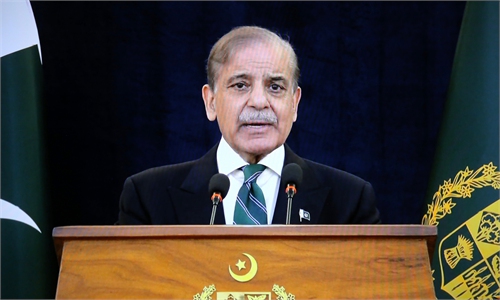
Illustration: Chen Xiai/GT
India and Pakistan have just agreed to another ceasefire agreement, yet they are already trading accusations of violations and provocations. This pattern, which has persisted for decades, underscores the urgent need for a new approach.
Looking back at over 70 years of turbulent relations between these neighbors, peace has been merely a brief interlude rather than a lasting state. Despite numerous ceasefire agreements along Kashmir's Line of Control, mutual accusations, sporadic military clashes and diplomatic tensions inevitably follow.
What keeps peace between India and Pakistan confined to paper? How can this deadlock be broken? Examining history and the current reality, the answer becomes increasingly clear: Only by prioritizing development and pursuing shared prosperity can these nations overcome historical and security barriers to achieve genuine, lasting peace.
The antagonism between India and Pakistan carries the deep imprint of British colonial rule. The colonizers' "divide and rule" strategy not only planted the seeds of conflict through artificial border demarcation but also intensified religious and ethnic tensions.
When India and Pakistan separated in 1947, Kashmir's status remained unresolved, triggering multiple wars and mass migrations that deepened resentment.
Today, Kashmir remains the powder keg of the India-Pakistan conflict. Even the most promising ceasefire agreements fail to address security anxieties and ethnic suspicions.
After World War II, the Cold War transformed South Asia into a battleground for influence between superpowers. This strategic region became a frontline in global competition, accelerating the arms race and worsening security dilemmas for both countries. India and Pakistan were forced to take sides, sacrificing independent development strategies and becoming entangled in external power politics.
Though the Cold War has ended, religious, ethnic and identity conflicts still simmer beneath the surface of both societies. When border tensions flare, domestic media and nationalist sentiment quickly escalate confrontations, forcing governments to respond with tough stances.
Ceasefires can collapse at any time due to unexpected incidents, terrorist attacks or miscalculations. Outside mediation typically offers only temporary relief without addressing the root causes.
If India and Pakistan hope to break this cycle, they must shift their focus from the zero-sum game of "who wins, who loses" to the mutual benefits of economic development. Only through connectivity, financial openness and shared prosperity can they gradually transform the breeding grounds of extremism, improve people's lives and reduce the drivers of hostility.
Rising above geopolitical confrontation, the China-proposed Belt and Road Initiative brings comprehensive opportunities in trade, infrastructure and energy to South Asia.
Pakistan has become a key node in this initiative, with projects like Gwadar Port and the China-Pakistan Economic Corridor boosting local employment and economic growth and enhancing regional connectivity.
While India remains cautious or even resistant due to strategic concerns, other countries in the region have already begun to experience the peaceful possibilities that development can bring.
To turn the concept of "development for peace" into reality, the international community must participate collectively. Multilateral platforms like the United Nations and the Shanghai Cooperation Organization are responsible for providing more policy support, development assistance and security guarantees to help India and Pakistan build trust and achieve sustainable development.
The world must respect South Asian countries' autonomy and avoid forcing new bloc divisions.
Ultimately, peace will become tangible rather than illusory only when "development first" becomes the consensus. This approach offers a turning point and new beginning for India, Pakistan and conflict-ridden regions worldwide.


